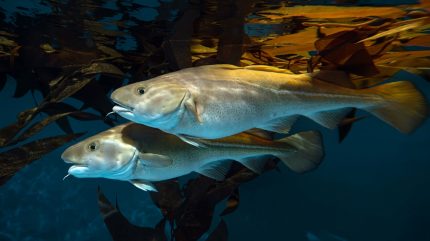
Fish-skin grafts outperform the standard of care in closing types of diabetic foot ulcers, according to a clinical study conducted by its designer Kerecis.
Results from the study, which were published in the New England Journal of Medicine, demonstrate that the fish-skin from the Finland-based company led to significantly higher healing rates, sustained superiority, and faster healing.
Kerecis’s product is a fish skin sourced from Atlantic cod which, unlike other tissue-transplant options, do not contain viral transfer risk whilst still possessing regenerative properties.
The prospective study (NCT04257370), named Odinn after the Norse god of healing and wisdom, is the largest randomised controlled trial of its kind because of the number of patients enrolled and severity of the wounds studied, according to Kerecis.
The study compared fish-skin on 255 patients with University of Texas grade 2 and 3 diabetic foot ulcers, which are deep ulcers that penetrate to the bones and joints. Clinical sites were across France, Italy, Germany, and Sweden.
After 16 weeks of treatment, Kerecis’s product led to healing in 44% of patients compared to 26% of those receiving standard of care, which included surgical debridement, use of dressings, and infection control. Diabetic foot ulcers treated with intact fish-skin graft were also associated with faster wound closure time, healing around two weeks earlier than standard of care. Most adverse events, 272 out of 279 reported, were assessed by the investigators as not related to the treatment.

US Tariffs are shifting - will you react or anticipate?
Don’t let policy changes catch you off guard. Stay proactive with real-time data and expert analysis.
By GlobalDataKerecis Scientific Advisory Board Chairman John Lantis said the study “provides compelling evidence that fish skin grafts could redefine the standard of care.”
“With rigorous methodology and strong results, Odinn paves the way for a promising shift in clinical practice, where fish skin treatment may soon become the go-to option for managing severe diabetic foot ulcers, ultimately leading to better patient outcomes and quality of life,” he added.
Kerecis made headlines last year when it was acquired by Coloplast in a $1.3bn deal. At the time, the Danish medical device giant praised Kerecis for being
one of the fastest-growing companies in the biologics wound care segment since it launched its first product in 2016. In the 2022/2023 financial year results, Coloplast reported Kerecis – which still operates as a standalone business – had pro-rata revenue of DKr772m ($111m) with revenue growth of around 50%.
Kerecis launched a new product in its fish-skin graft line earlier this year called Shield Standard. The new graft has a silicon backing, which is used in wound products to maintain a moist wound-healing environment.
According to a report by GobalData, the wound care management market is expected to total $38.8bn by 2030, with a CAGR of 3.4%. The tissue-engineered skin substitutes market is forecast to reach almost $3bn by 2033.



